Welcome
To Country Town's website
This lovely picture book tells the decade-by-decade history of a fictional Australian town from the First Nations mob living by the river crossing in the 1820s through to the present day. The accompanying text highlights some of the little characters in the pictures as well as dealing with many of the major themes of Australia’s history. Although the little inland setting is fictional, there is plenty of information about Australia’s real towns with extracts from historical sources. You can buy the book in either hardback and paperback at most retail outlets. Teacher Notes are available online from Ford Street Publishing. We are also inviting our young readers to send in suggestions for the name of the town. Have a look further down our website.
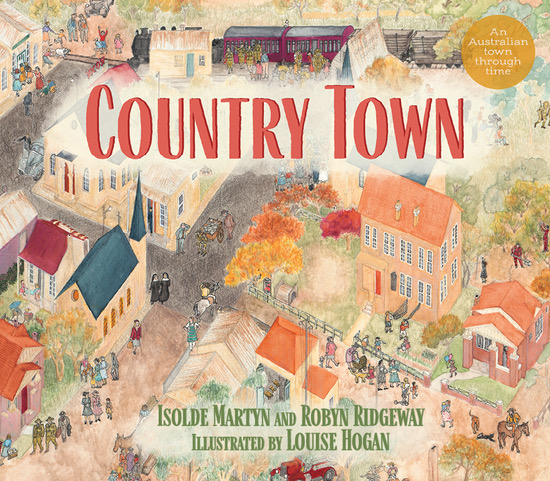


Winner of Children's Book Council of Australia's 2024 Eve Pownall Award and Shortlisted for New South Wales Premier's 2024 History Award for Young People
Want to take a peek inside?
Join us for the decade-by-decade story of an inland town from a First Nations clan’s camp by a river crossing through to the present time. We have made it an imaginary town because we did not want to tie it down to any specific place. That way we could use the experience of many real Australian towns.
It is the decade-by-decade story of an inland town from a First Nations clan’s camp by a river crossing through to the present time. We have made it an imaginary town because we did not want to tie it down to any specific place. That way we could use the experience of many real Australian towns.
Want to take a peek inside?
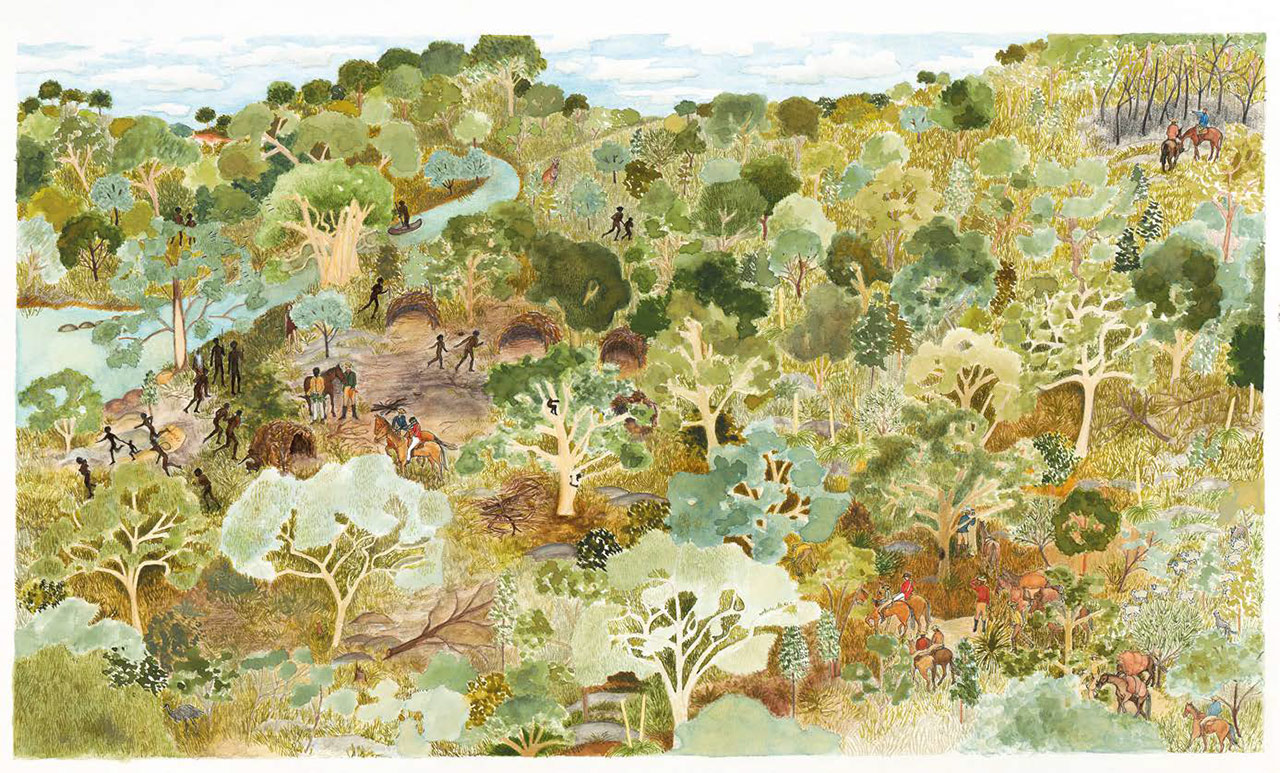
This picture shows the first meeting between the local clan and a party of explorers from the settlement at the coast. While the strangers are interested in reporting back everything about the land they are travelling through, they are also looking for areas that would be suitable for Western-style agriculture or running sheep. This valley with a river crossing might be perfect. For our local clan, it will be the end of the way of life they have led for thousands and thousands of years.
If you would like a vivid account of a real expedition, you can read up on the experience of Sir Thomas Mitchell here
The picture below shows the celebrations in the town at the end of World War I (1914-1918).
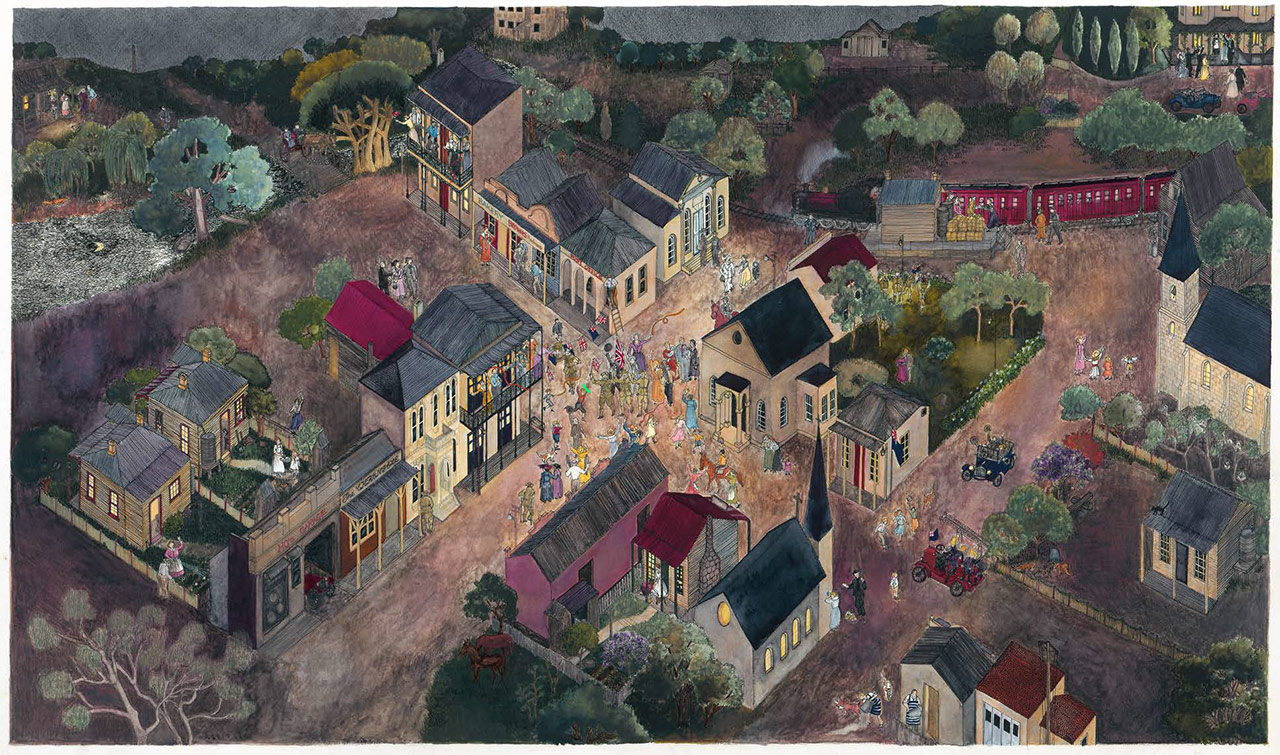
Being part of the war on the side of the British Empire was the first time that many Australians travelled abroad. For most of these young men and women, it was a very exciting adventure at first. The family of Louise, our illustrator, have kept the letters of one of their uncles who served in Egypt and later lost his life in France. It is sad to read his gradual disillusionment and realization of the horror of the war.
In our picture, the townspeople are celebrating the end of the war but there are families who are very sad at losing relatives and some of the men who return from fighting will never be able to live a normal life again.

After reading Country Town, the students at Wyndham School, near Bega, NSW, are writing a history of their village.
They have also suggested two possible names for the little town in our book:
Giiyong which means ‘welcome’ in the Yuin Nation language. The other is Walawaani meaning ‘How are you going?’
Photo courtesy of Principal and students, Wyndham School
You are invited...
To journey back through time
ISBN: 9781922696342 (hardback) / 9781922696359 (paperback)
Publisher: Ford Street Publishing
Distributor: New South Books
Release Date: 15 September, 2023
info@fordstreetpublishing.com
Website: www.fordstreetpublishing.com
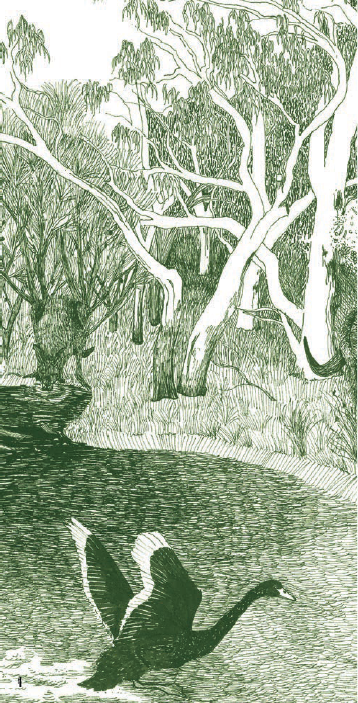
Meet the creators
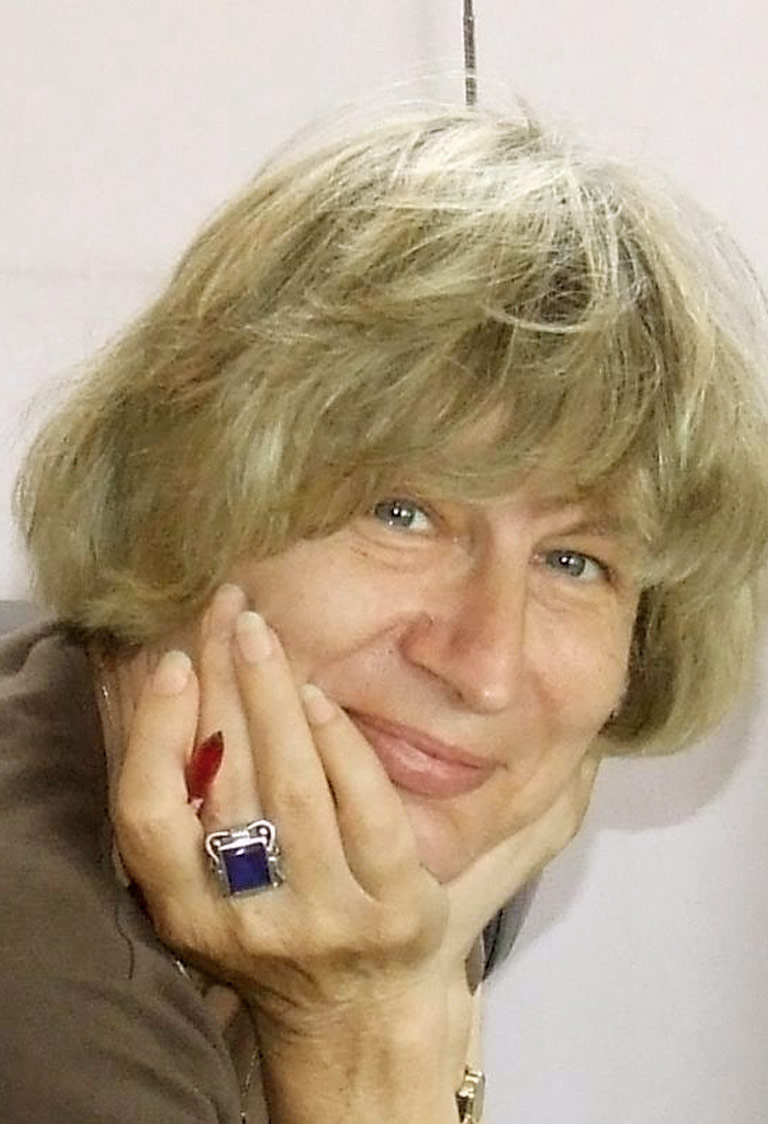
Isolde Martyn
Sharing a love of history, whether through her novels or now in a picture book for children, has been a lifelong incentive for Isolde Martyn. She grew up in London and has a BA Hons in History from the University of Exeter. Her career has been a mix of academia and publishing, including researching all the towns in Australia for the Bicentenary Volume Events and Places and editing The Readers Digest Motoring Guide to Australia. Isolde has written nine historical novels and won top awards in America and Australia.
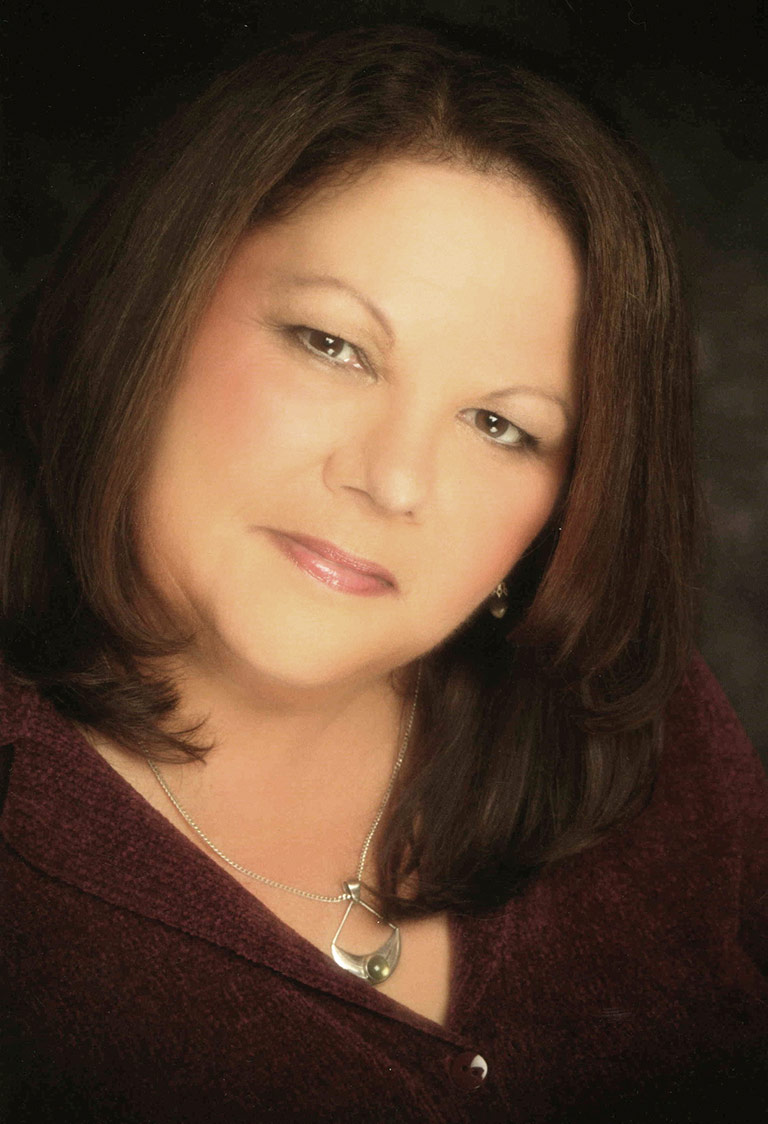
Robyn Ridgeway
Robyn’s ancestry is from the NSW North Coast. Her mother was a Thungutti woman, her father a Worimi man. Robyn teaches Aboriginal Studies at both a Diploma and HSC level for TAFE. She is involved with several Aboriginal Committees with TAFE as well as the local Community.
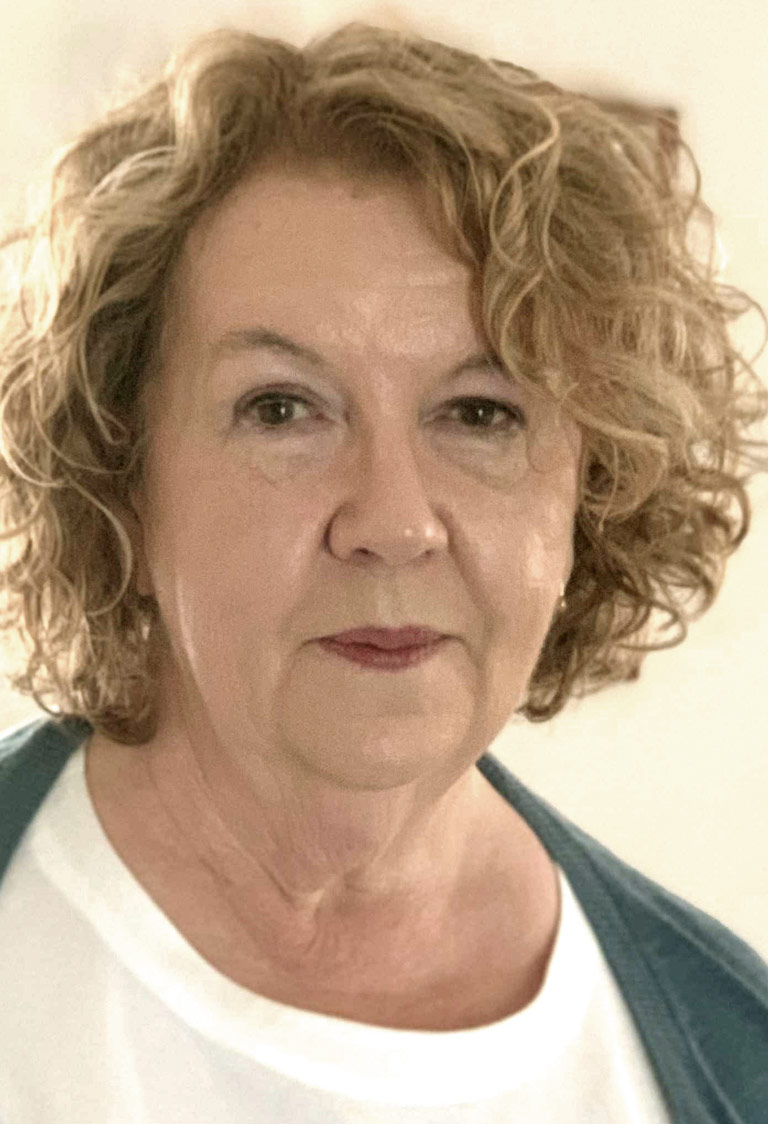
Louise Hogan
Illustrator Louise Hogan is best known for When a Goose Meets a Moose and Apples From Hurricane Street, which was shortlisted for the Australian Children’s Book of the Year Award. She graduated from the National Art School with a Diploma in Interior Design but for years she wanted to illustrate children’s books. Louise even worked in Taronga Zoo’s art department to practise drawing animals.
Frequently Asked Questions
Isolde: Years ago, I came across John S. Goodall’s The Story of an English Village and how the village marketplace and the inside of one particular house changed every hundred years. I thought that was really excellent. Years later, when it was my job to research nearly every town in Australia for the Bicentenary, I had the idea of a picture book of a Australian country town. It’s taken a lot of research and it’s been a very long term project. I am hopeless at art so it was good to be able to work with Louise. She has been marvellous at making all the ideas come alive.
Louise: Too long. It wasn’t easy and at times it was overwhelming. Changing the angle of the view helped a lot. Sometimes I could see Isolde was just longing to get onto the next pages.
Isolde: Because I didn’t want it to be in a particular state. What we wanted to show was the typical experiences of Aussie towns; events like bushfires, droughts, floods, goldrushes, rabbit and mice plagues, railways and by-passes, annual show days. That sort of thing.
Louise: You are quite right but it would have taken up too much room. Some country towns like Kalgoorlie have streets wide enough for an oxen team to turn around. We had to keep our streets narrower so we could give the sense of a town not just one main street.
Louise: I’d tell Isolde if I needed any picture references for buildings, machinery, clothing. As we got into the era of photography, it became easier.
Isolde: When we first started this project, I used to go into libraries, especially the Mitchell Library in Sydney, and photocopy pages from town histories and other reference books. I also took lots of photos when I visited country towns.
One thing we did together was visit the Powerhouse Museum Library. The costume curator kindly took us down into their behind-the-scenes area and showed us their costume collection.
Louise: When the internet arrived, it got much easier. There is so much helpful visual material now available.


